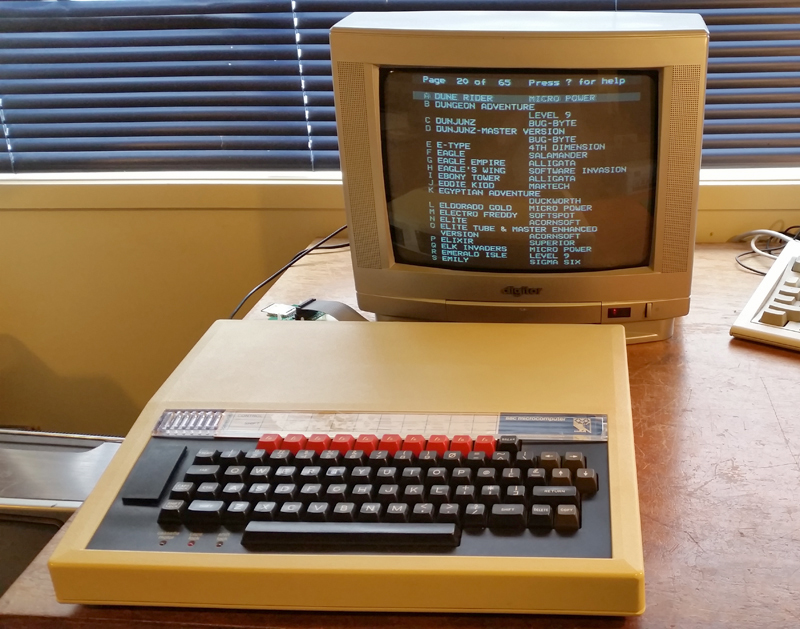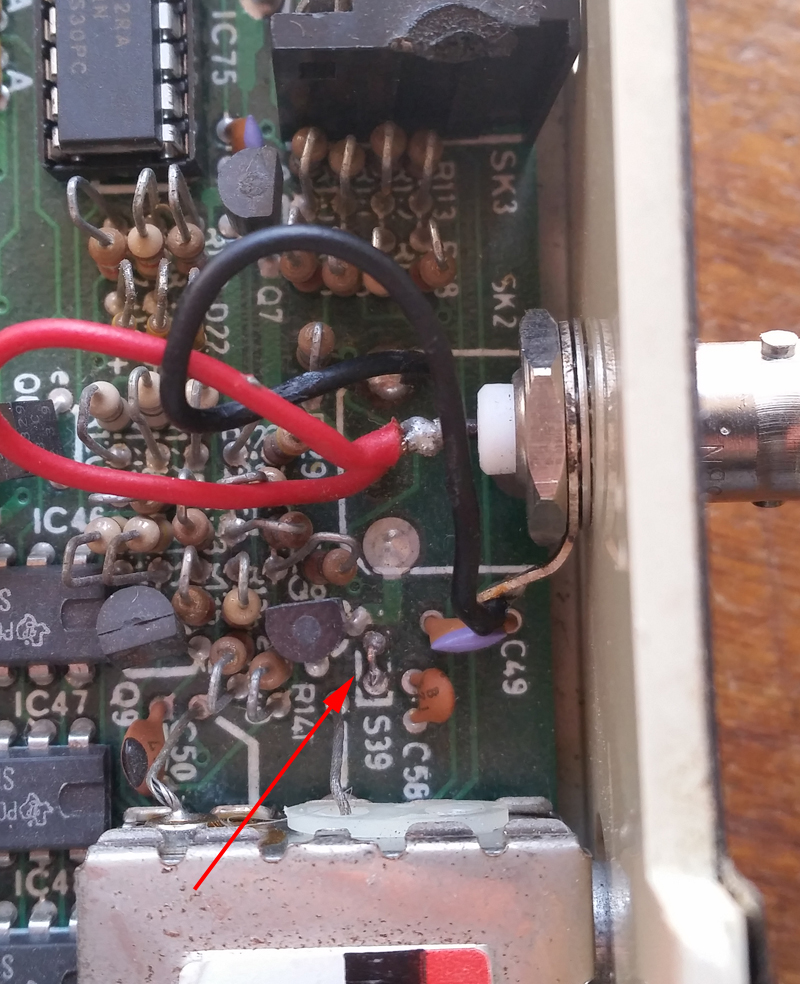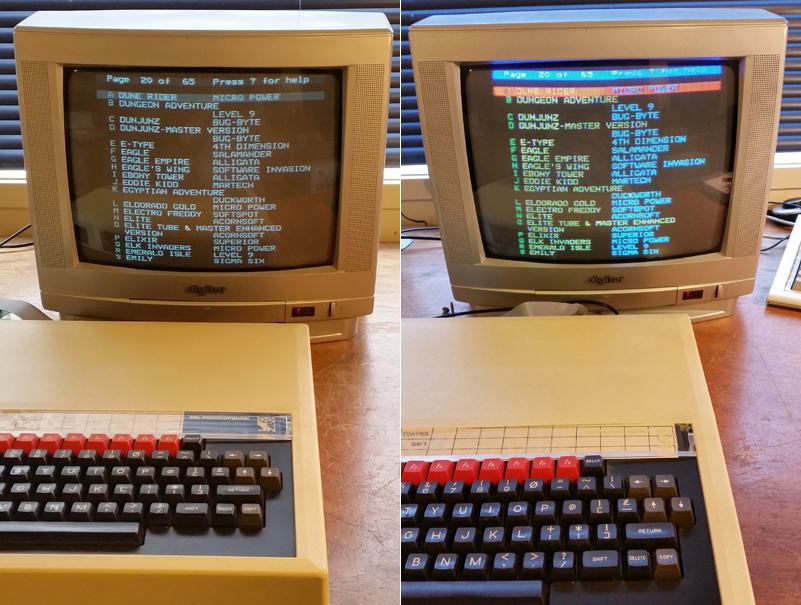| Tweet |
Adding colour composite video to a BBC (b) Microcomputer
Introduction
The Acorn BBC (b) Microcomputer is an awesome piece of machinery for 1981. If anything, it's over-engineered, which is one of the reasons it was so expensive at the time and hence never caught on in British homes. The computer has many interfaces amongst which include three video outputs. These are RGB, RF modulation (a UHF signal for plugging into a TV) and composite video (Figure 1).

Figure 1. Just some of the many I/O interfaces on the BBC (b) (others are underneath!)
The composite video output is unusual in that the default signal is monochrome (Figure 2) and the connector uses a BNC socket instead of the usual RCA one. I assume the Acorn engineers felt that anyone desiring colour would either go with a dedicated RGB monitor and cable, or slum it with a slightly blurry image on the family TV. If colour was not required (say for crunching numbers or word processing) then composite monochrome video delivered crispness on a monochrome monitor.

Figure 2. BBC (b) hooked up to its default monochrome composite video
Given I didn't have the necessary RGB monitor and cable, my usual method of hooking the BBC to a screen was to a TV via the UHF RF interface. This was a hassle because each time I had to tune the TV in. Having just added composite video to my ZX81, I wondered if there was a way I could add colour to the monochrome composite signal hence make showing off the BBC a lot more convenient?
I decided to do some Googling....
Insanely simple!
What I found was this article. It inferred that my BBC (b) probably already WAS largely configured to output colour composite video! All that was need was a capacitor at C58 and a link at S39. Heck, the document said some machines had the capacitor already and only thing missing was the link!
I checked my own machine. Sure enough, the cap at C58 was there. All I needed to do then was to join the two solder pads at S39 (Figure 3). It seemed to be that easy!

Figure 3. S39 jumper points on the board in the default configuration
...and indeed it was. Well...kind of. The main problem was the space was very tight. Fortunately my soldering iron is quite thin but I still had to be very careful I didn't touch any other components with the super-hot neck. In the end I managed to solder across a short jumper. There are no prizes for beauty (Figure 4) but it does the job!

Figure 4. S39 on the board now jumpered
Result
The result was perfect! With the jumper in place, and a BNC/RCA adaptor and RCA cable connected to the composite video input of the TV, I now had acceptable composite colour. Much crisper than the UHF RF signal through the TV tuner!

Figure 4. Mono composite video (left) vs colour composite video (right)
Final thoughts
To most of those familiar with the Acorn BBC, I'm picking this article is not news at all. You may be wondering why I even bother to write about it. The ease of the modification was news to me though, and may be news to other collectors that have a range of models rather than specialising in this one line. We "generalists" tend to know general facts about a lot of machines, but we don't always know the hardware of each specific model in detail. This post may help in that regard.
It's great to know I no longer need to tune in the TV every time I want to use this machine. Much time and hassle will be saved. Furthermore, the modification is completely reversible simply by removing the link! I'm now wondering which others of my early 1980s computers (The TRS-80 CoCo, Aquarius etc.) I might be able to reversibly modify for colour composite video output.
Watch this space!
Tez
12th January, 2016